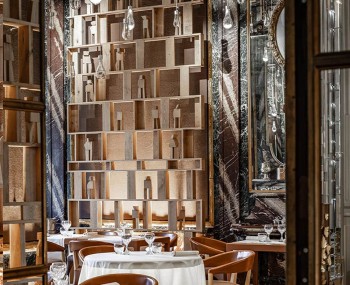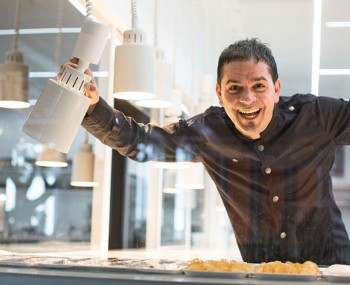Chef Gonzalo Aramburu talks about "contemporary Argentine cuisine," having worked with Boulud, Trotter, Robuchon, and Berasategui. At the first Michelin edition in the country, he snags two stars at once.
Cover photo: @Axel Indik-Para Ti
The story
It was an historic day on November 25, 2023, when the Michelin Guide, for the first time, awarded a double Michelin star to an Argentine restaurant. Specifically, Aramburu, the eponymous restaurant of the forty-seven-year-old Gonzalo Aramburu in Buenos Aires.

It was the realization of a dream for someone who had always aimed high. After graduating from the Argentine Institute of Gastronomy and Lenôtre school in Paris, Aramburu worked from Miami to New York with Daniel Boulud, then to Chicago with Charlie Trotter. And further with Joël Robuchon and Martin Berasategui. "I worked in starred places because I always knew that's what I was aiming for. I am very demanding, especially with myself, and I always aspire to give my best," the chef tells La Nacion today. Hence the risk of going solo when everything seemed possible.

"I was twenty-nine, just back in Argentina after working abroad, and I decided I had to open my restaurant. That's why I sold my car, a beautiful cream-colored Twingo, and used up my savings. I gave everything to have my space. My father helped me a lot with the place; we did it all in one go. We bought chairs (not where you buy restaurant furniture), had them glued, and arranged them. So, in 2007, I opened Aramburu." The location was in the Constitucion neighborhood of Buenos Aires, away from the crowds but affordable for rent, inside an old and run-down union headquarters.

"I knew I wanted to do fine dining. I wanted to take a bit of everything I had seen and liked in my life to showcase it here." It was the time of molecular gastronomy, and Argentina seemed somewhat unfamiliar with fine dining. The beginnings were not the best: there were only three in the brigade, and even friends eventually stopped coming. In the third year, things started moving in the media, with the first visits from journalists. Then, after ten years, the move to the La Recoleta neighborhood, in a more spacious venue with a beautiful cellar and an open kitchen, personally designed to enhance the sought-after experience.

Here, the offering is perfected: mornings are dedicated to experimentation, a sort of laboratory for new recipes. "But I don't follow trends. We've always had dishes for vegetarians and vegans, and lately, our menu practically contains no flours. For us, the main thing is to enhance the product. Unlike the early years when I did what I wanted, today the customer sets the path." He calls it "contemporary Argentine cuisine" because the country itself is a melting pot of European, American, and even Asian influences due to migratory currents.












